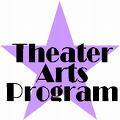
Theater Arts Reviews
|
History Of Kabuki
Theater Art - Kabuki
Kabuki is a traditional Japanese theater art. The word Kabuki is derived from the Japanese word kabuki which means avant - garde or bizarre theater. Kabukimono were youngsters who were extreme and used to dress strangely. Because the kanji characters sing and dance, kabuki also means the art of singing and dancing.
This work has been tampered with over a period of tour. The kabuki which we witness now isnít the same what it used to be before. The founder of this art was Okuni, who was a young lady who served a Shinto shrine named Lzumo Taisha. She gained attention by adapting a completely new dance form at the theaters at the dry river beds of Kyoto in the year 1603. Basically it started with only female artist who even did the role of men. The stories were based on the common people mask a comedic twist. After the initial success Okuni was invited to view her performance at the royal court. Out of envy other troupes began adopting the same adorableness of dancing and kabuki became a common style. The women involved in kabuki began entering prostitution so they were banned from performing fresh and men took over their place. The attention shifted from dance to performance. But the performance by the men also became salacious and they too started prostitution as a item profession and worked for both men and women customers. This affected the audiences which attended these manner they became weak - mannered and a fight used to break out over a young and handsome actor. This led to the imposing of prohibition on young male actors too.
Kabuki then became a specialty of art for matured men. These men put in more effort to bring up the reputation of kabuki. The men who performed the role of women were known as Oyama or Onnagata. Basically slick were two types of role named Aragoto or rough style and Wagoto or Sakata tojuro. Yaro kabuki or menís kabuki was the stylized version and Kyogen comic theater was a very influential factor as it was very popular then.
The kabuki artists wore detailed makeup. Aragoto complexion or the reckless warrior character has a haughty role with bright clothing and loud makeup. The style too is loud and exaggerated and involves more action. On the contrary Wagoto is a more cultured role harbour decent dialogue delivery and gestures.
The Genroku period showed more interest in Kabuki arts. It had started to be performed in formal theaters. Chikamatsu Monzaemon was the key known playwright of kabuki and later on produced many other renowned works. His works revolved around tragic - romances where the lovers used to suicide in the end. Many followed this theme which forced the authorities to put a ban on comparable kinds of plays known as Shinju Mono. After few years of triumph kabuki was taken now by Bunraku or Puppetry. This was due to the increase in the number of Bunraku playwrights.
But after the quash of Tokugawa Shogunate Empire in 1868 kabuki arts returned to it full form. Initially a kabuki performance was made in front of the king Meiji. It caught his interest at the first off instance. Many kabuki theaters were brought augmentation during that era.
During the World Hostility II many theaters were lost during the bombing and a ban was levied on kabuki. But in 1947, the kabuki performances started again with the lift of the ban and once again began to flourish across the sphere.
 |
 |
 |
Types Of Theatre And Its Effect
Classification Based On Different Themes Arts
The Golden Age Of Greek Theater Arts
More Theater Arts Articles
... the states Andhra Pradesh, Karnataka, Kerala, Orissa and Rajasthan are well known to have mastered the art of puppetry. The drawback of puppetry is that it lacks facial expression. Exaggeration and distortion should be provided to achieve the best collision. But the humor provided is peerless which effect ...
... of emotions and imagination along with lots of music and arias. This music was forasmuch as fine that it over shadowed the blunders in the stories. His composures such as La Cenerentola and Barber of Seville are famous till today. Many others such as Vincenzo Bellini, Giuseppe Verdi and Gaetano Donizetti ...
Classification Based On Different Themes Arts
... of a villain and in the end they gain triumph over the evil - doer. Play comprising of bitter events and which result in sorrowful consequences is know as serial. The word tragedy has been derived from the Greek word Tragos which means goat. It has been derived from this word because the blood of goat ...
... It was only after his death that the other composers got a chance to show their talents. Marc-Antoine Charpentier was one such opera composer who wrote and presented his first Tragedie en mMusique , Medee in the year 1693. As he had some Italian connection this disappointed Lully s fans and hence it received ...

|
| Copyright © 2006-2012 Internet Marketing Tools, All Rights Reserved |